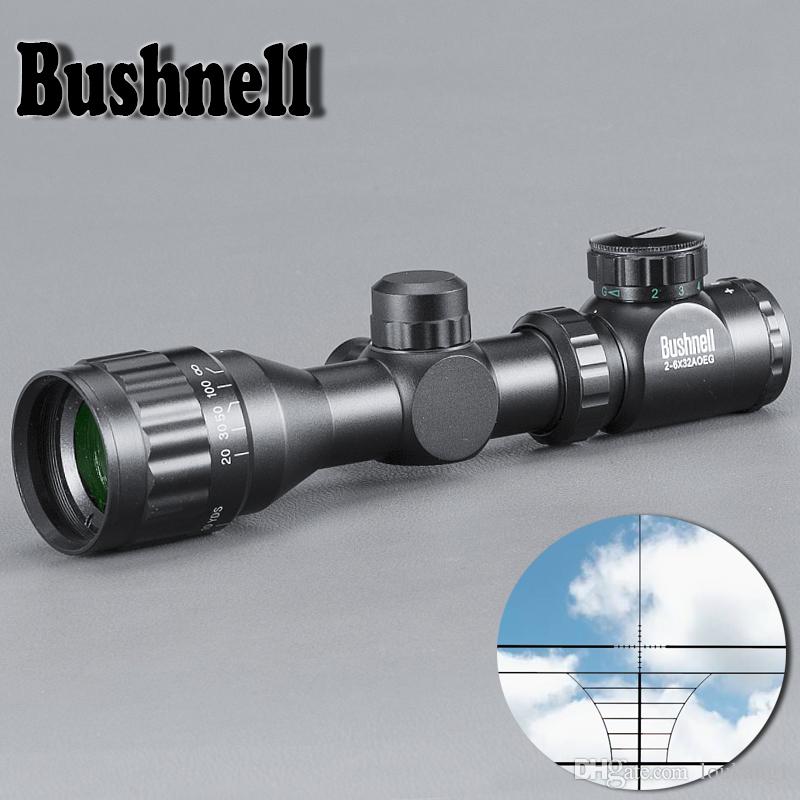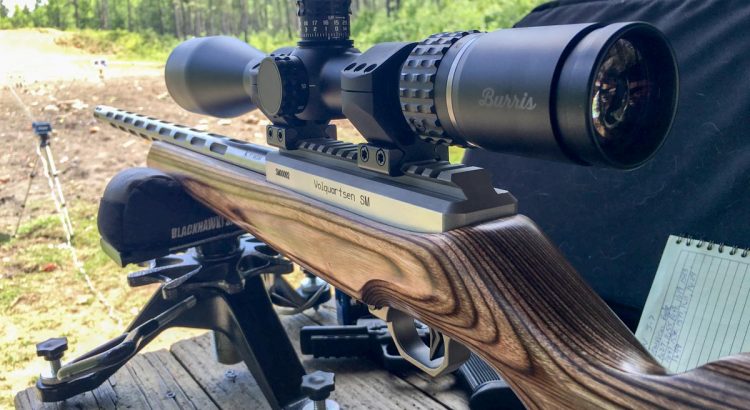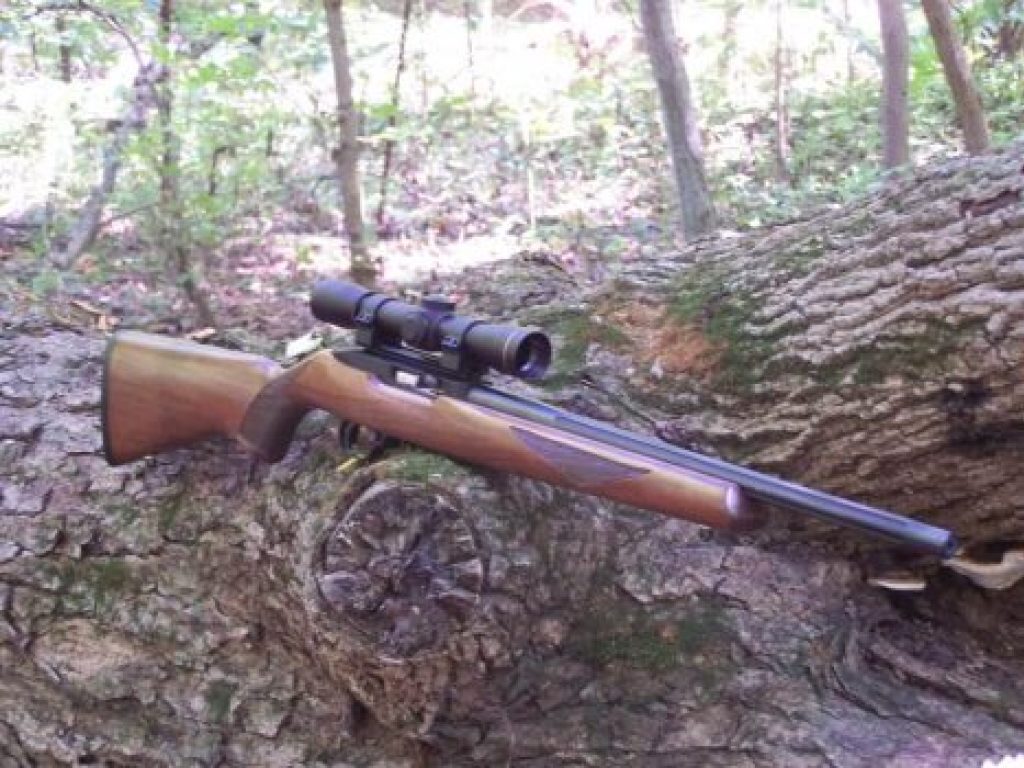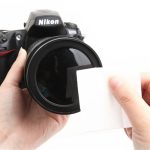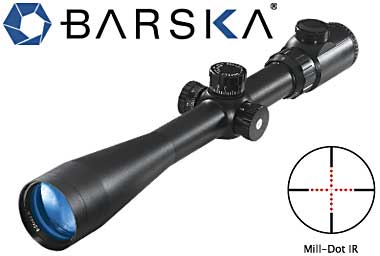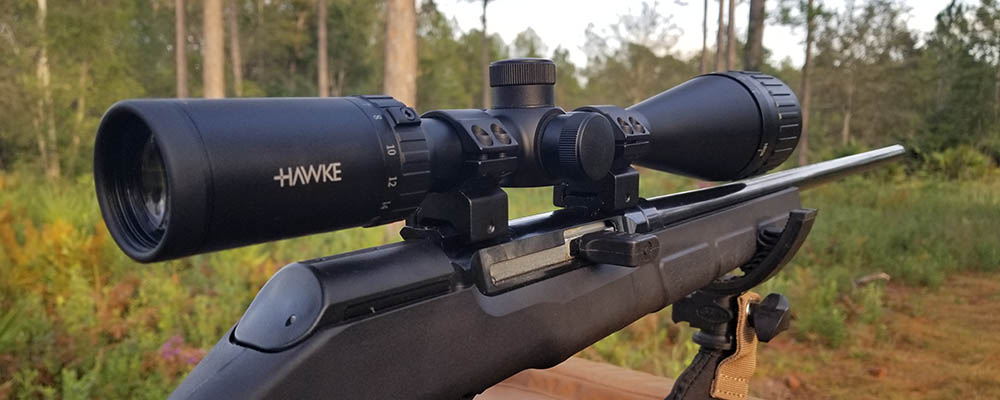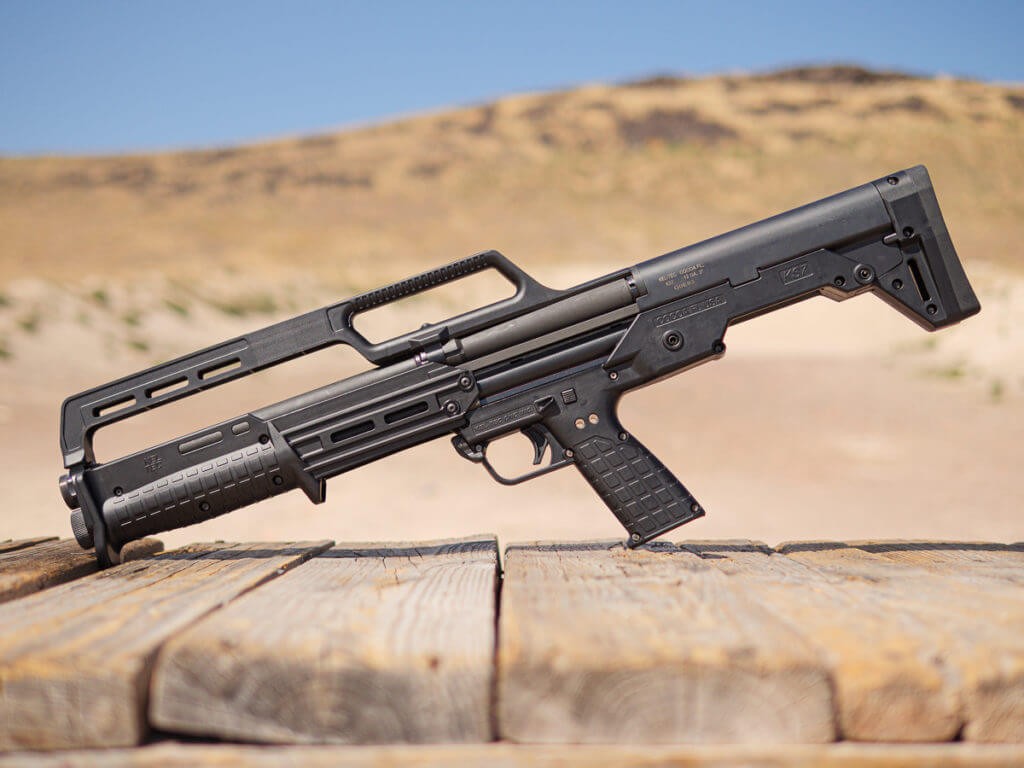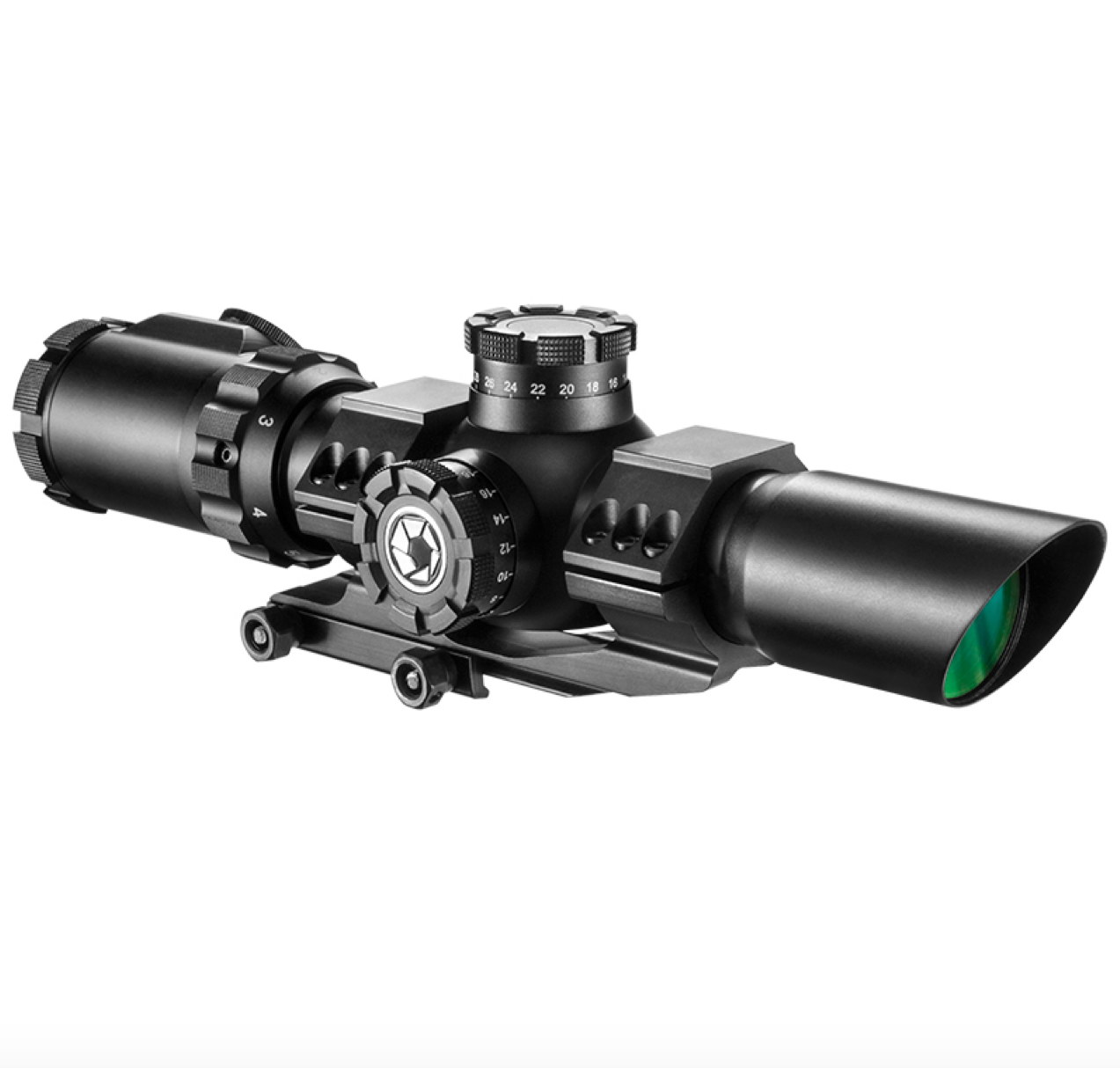Welcome to your guide to rifle calibers where you’ll learn to select the right cartridges for your hunting and shooting needs. Hopefully hunting season is right around the corner in your neck of the woods!
Now this article is going to begin by covering some basic information about rifle calibers and cartridges for the sake of any readers who may be new to rifle shooting or are planning to take up hunting for the first time. The rest of the guide will describe the most popular rifle calibers, some of their history, and key specifications.
What Is a Rifle Caliber?
First, let’s clarify some of the confusion around cartridge caliber designations so you’ll sound like you know what you’re talking about. Standard naming convention tends to describe rifles and ammunition by their ‘caliber’. The term caliber refers to the nominal bore diameter of a rifle in inches or millimeters. It also refers to the diameter of the bullet projectile, or sometimes the cartridge case.
The modern cartridge (or round) consists of the bullet, case, propellant (gunpowder), rim, and primer. A common misconception is to describe a round of ammunition as a ‘bullet’. Just know that a bullet attaches to the case, which are both part of the entire manufactured cartridge. A ‘centerfire’ cartridge is one with a replaceable primer located in the center of the case head. Most cartridges are centerfire, except for some of the smallest which are rimfire.
Ammunition cartridges are usually named after their bullet caliber (diameter). Caliber is measured with either imperial or metric designations depending on where the cartridge was manufactured. For example, a .223 Remington refers to the imperial measurement of a specific cartridge with a bullet diameter of roughly .22 inches. The metric equivalent is 5.56 millimeters, and its specific cartridge is designated as the 5.56x45mm NATO (the ‘45mm’ refers to the length of the case).
Caliber designations don’t always describe bullet sizes, or even exact measurements. For example, the bullet diameter of a .38 Special is actually .357 inches, like the .357 Magnum (the .38 describes the case diameter). A 9mm bullet (0.35 inches) is the same size as a .380 ACP. A 6mm rifle (0.23 inches) fires the same round as a .243 caliber rifle. Sometimes cases can be wider than bullets. It’s definitely going to help to get some rifle shooting tips.
Variations in nomenclature can be due to cartridges being modified or repurposed for certain firearms while keeping the designation of their parent cases. Often the difference between cartridge rounds with equivalent projectile sizes, but different names, is to distinguish between varying powder charges, chamber pressure, and case lengths.
The way firearms and projectiles are categorized by caliber is honestly quite confusing and it’s not the point of this article to dig deeper into the matter. However, there are a few important metrics that are associated with rifle calibers that you should consider: bullet mass (grains), muzzle velocity (feet per second), muzzle energy (foot-pound), and recoil energy (foot-pound). Keep in mind that bullets with different mass can be used in the same cartridge which will affect its ballistic performance (only one weight is listed in this guide). You’ll also need to consider which shooting targets are most appropriate for the type of caliber, and you’re probably going to need a good rifle scope to match. So let’s move on to the list of the most popular rifle calibers!
A Comprehensive List of Rifle Calibers
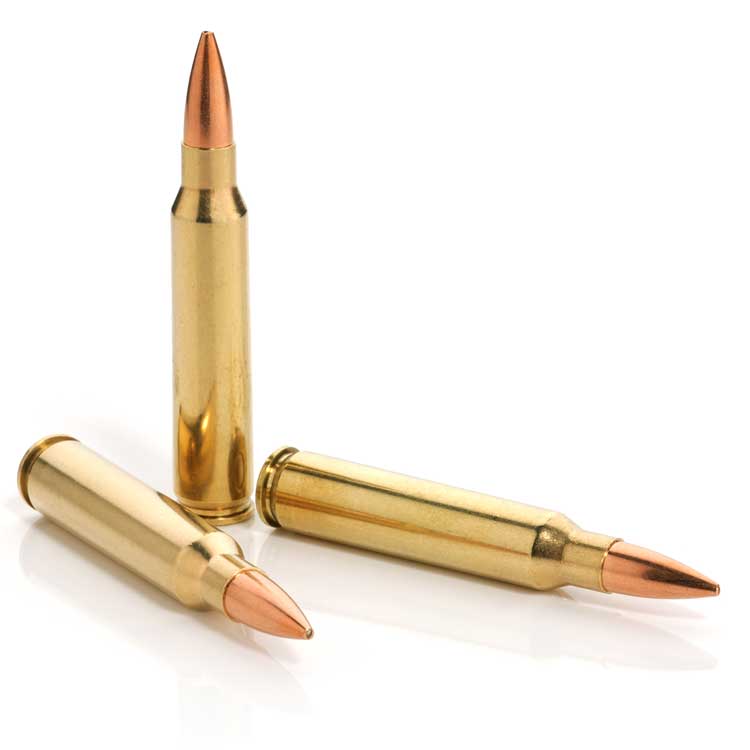
.223 Remington / 5.56x45mm NATO
This is a .22 caliber center-fire cartridge that was originally developed for a new lightweight combat rifle in 1957 (the ArmaLite AR-15). It later became the ammunition for the standard U.S. military M16 rifle. The .223 Remington is one of the most popular cartridges of all time and is currently used in a wide variety of semi auto and manual-action rifles.
This cartridge is ideal for varmint rifles, which are essentially small-caliber precision rifles used for varmint hunting. The .223 is fast, accurate, and a good introductory round for centerfire rifle shooting or self-defense. It has good ballistics, light recoil, and shoots flat.
Bullet mass: 55
Muzzle velocity: 3,240
Muzzle energy: 1,265
Recoil energy: 3.2
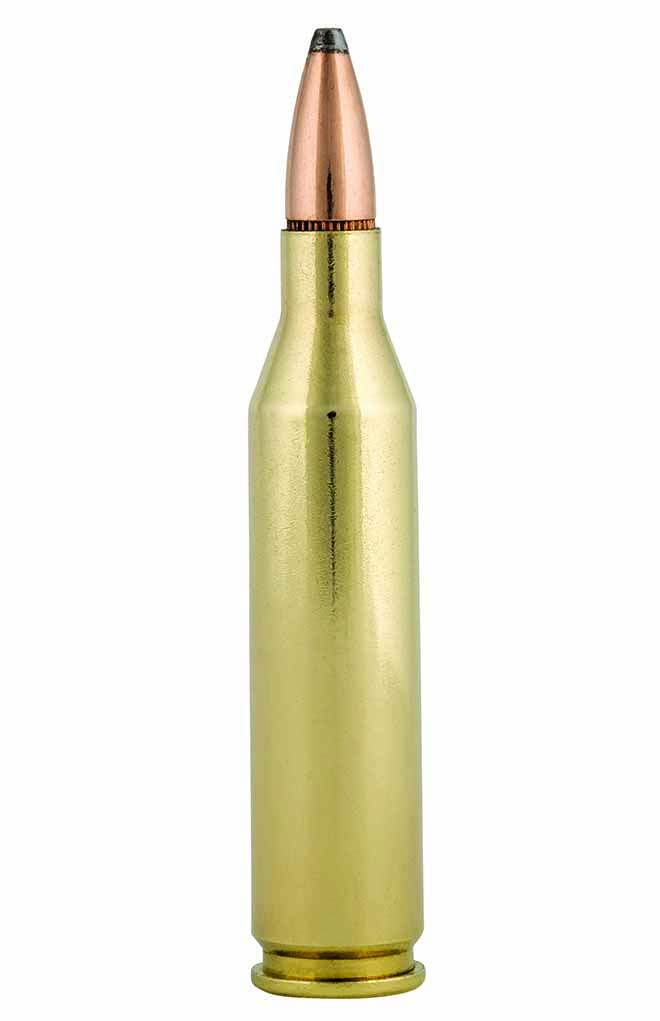
.243 Winchester
A versatile sporting rifle cartridge that can be used with light or heavy bullets. The 6mm/.243 caliber was designed as a target or varmint round, but can be used to take down medium-sized deer, antelope, or coyotes at range.
The .243 Winchester cartridge was considered groundbreaking during its development for being able to accommodate lightweight bullets optimized for long-range varmint shooting (over 350 yards) or heavier bullets for bigger game (e.g. deer).
Bullet rounds that weigh less than 90 grains are recommended for varmint or long-range target shooting. More hunting grounds are making this cartridge deer-legal so it’s gaining in popularity.
Bullet mass: 75
Muzzle velocity: 3,447
Muzzle energy: 1,979
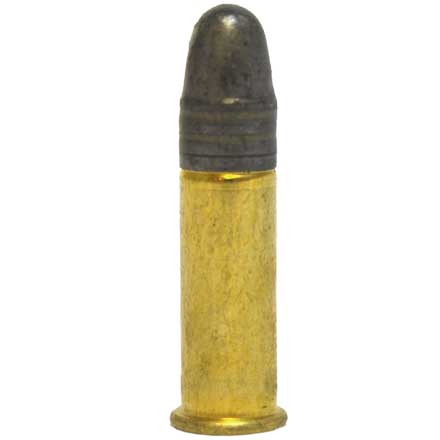
.22 Long Rifle
The .22 LR is a small-caliber rimfire round that utilizes a heeled bullet and rimmed case. It’s the most common ammunition in the world by units sold and is used in a variety of rifles, pistols, revolvers, and submachine guns.
This cartridge was introduced in 1884 and developed after the .22 Short, which was the first American metallic cartridge designed for the original Smith & Wesson revolver in 1857.
The .22 Long Rifle is popular with novices and experts because of its very low recoil and relatively low noise. It’s an inexpensive round and hundreds of different guns are chambered for it. Very popular for target shooting, plinking, small-game hunting. It’s also a great option for beginners learning how to shoot a rifle.
Bullet mass: 40
Muzzle velocity: 1,200
Muzzle energy: 131
Recoil energy: 0.2
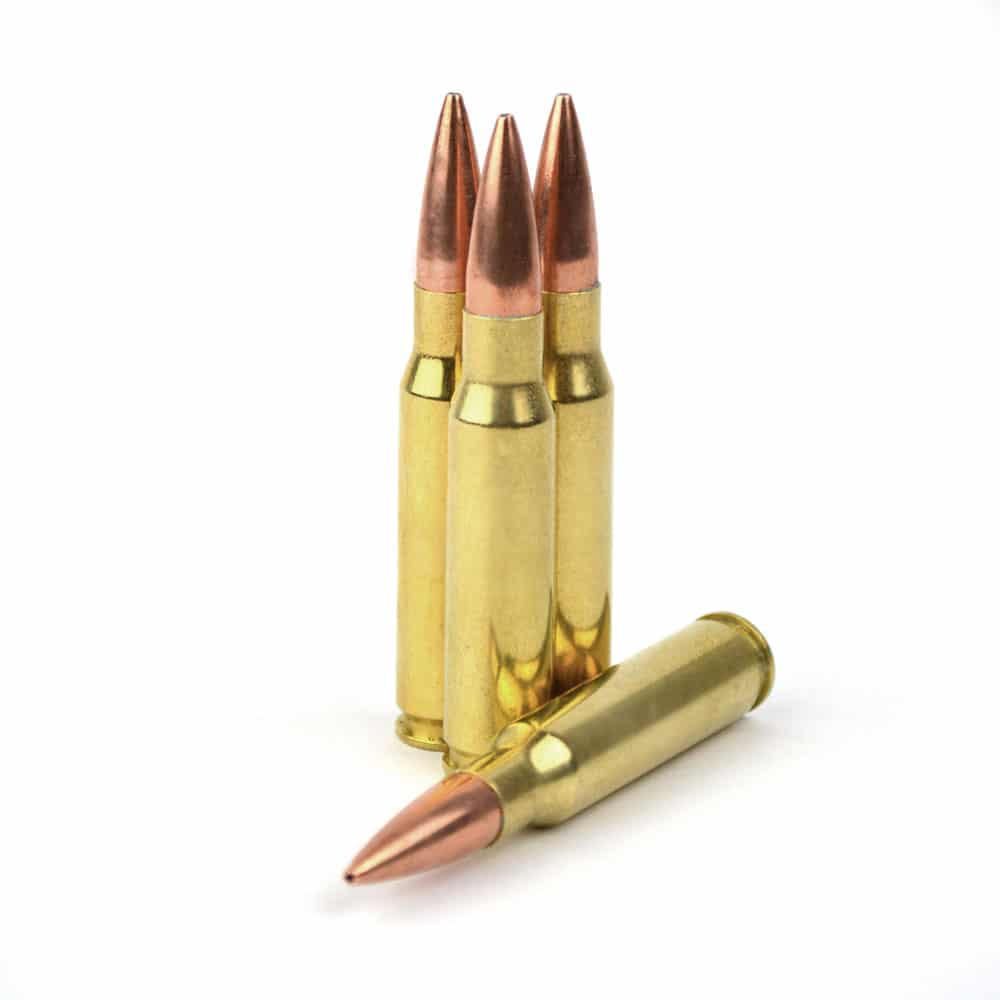
.308 Winchester / 7.62x51mm NATO
Designed in 1952, this smokeless-powder rimless bottlenecked cartridge has become one of the most popular medium to large game hunting rounds in the world, and one of the best non-magnum .30 calibers around.
It’s a highly versatile cartridge that is used on deer, pronghorns, moose, elk, and bears. Bushveld hunters in Southern Africa use it for small and large antelope. It also sees widespread military and law enforcement usage.
Bullet mass: 150
Muzzle velocity: 2,820
Muzzle energy: 2,648
Recoil energy: 15.8
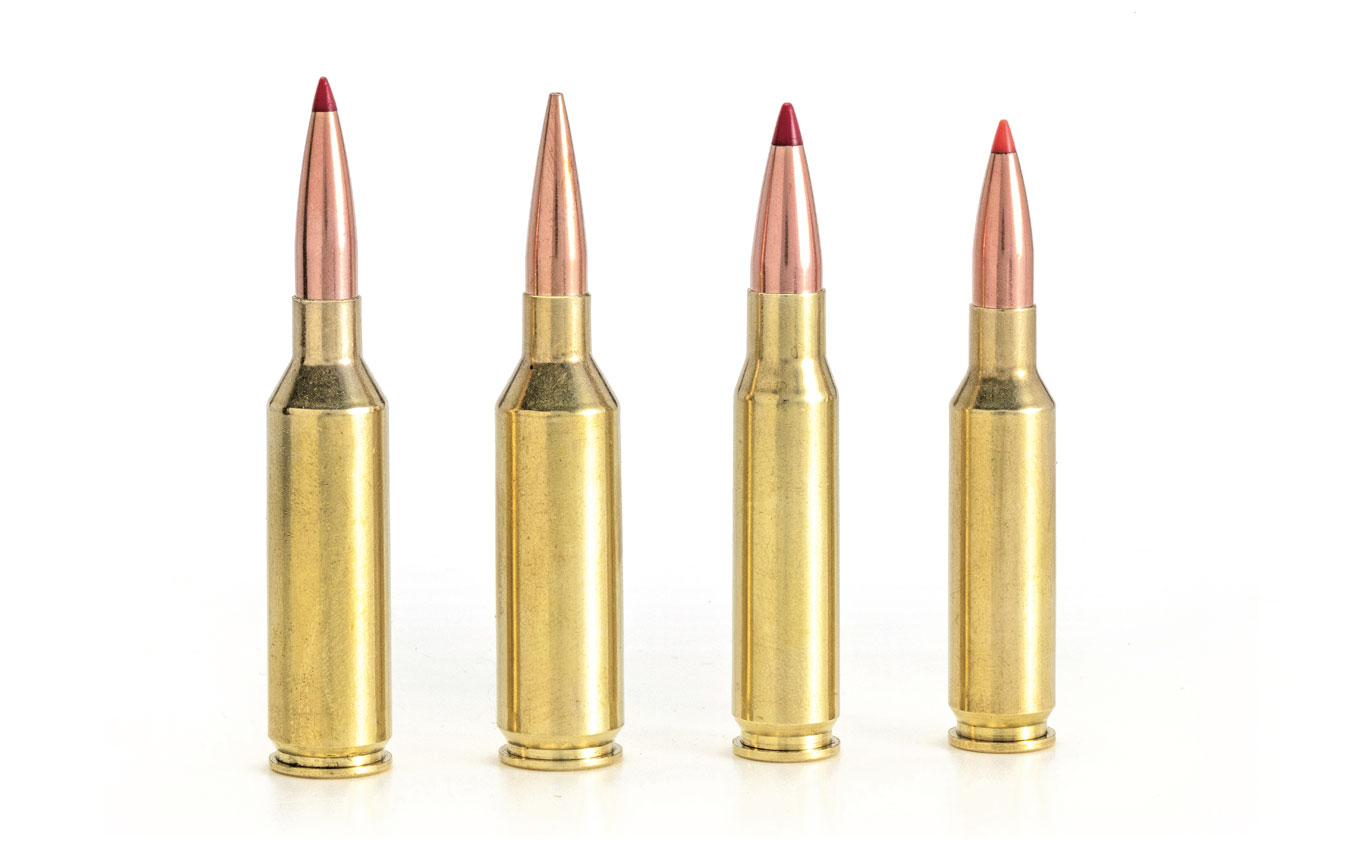
6.5mm Creedmoor
Based on the .308 Winchester length case, the 6.5 Creedmor is becoming increasingly popular due to its ability to achieve good ballistics and sufficient downrange energy with a relatively light recoil. It is a centerfire rifle cartridge that can be chambered in short-action rifles.
The round was designed for long-range target shooting and is also used successfully in game hunting; you may want a good spotting scope. It is a very efficient cartridge that is popular with metallic silhouette shooting and offers accurate shot-to-shot performance for marksmen. Think of the 6.5 Creedmoor as being a solid option that’s more powerful than a .243, with less recoil than a .308.
Bullet mass: 143
Muzzle velocity: 2,710
Muzzle energy: 2,283
Recoil energy: 12
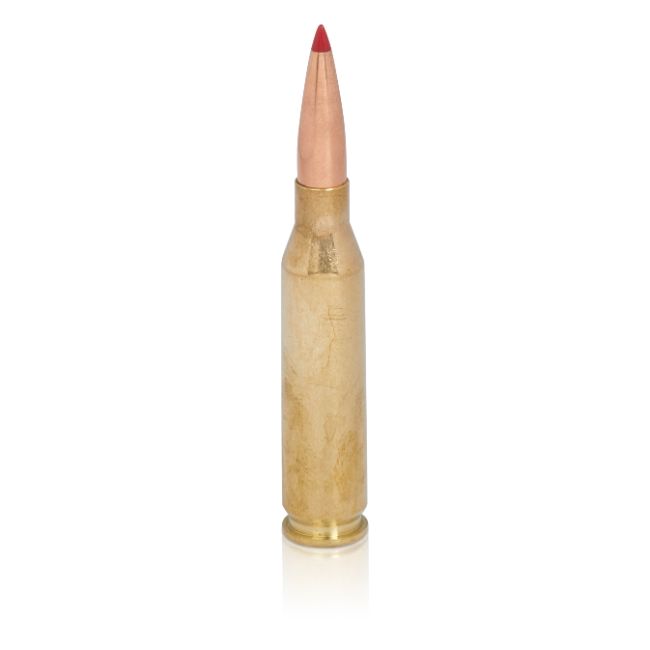
.22-250 Remington
A very high-velocity short action .22 caliber cartridge ideally suited for varmint and small game hunting. It started out as a wildcat cartridge that was designed in 1937. The Browning Arms Company chambered its High Power Rifle in .22-250 in 1963 even though the ammunition wasn’t in mass production at the time. It became mass produced when Remington adopted it two years later. Check out top rated .22 scopes here.
The .22-250 Remington’s extreme velocity is well known and it developed a reputation for causing remote wounding effects called hydrostatic shock in the 1930’s and 1940’s. It’s currently the fastest production cartridge available (over 4,200 feet per second with a 40 grain bullet). Due to its commercial availability and small powder load, the .22-250 is a cheap round for high-volume shooters and is excellent for varmint hunting because it shoots fast and flat so you don’t have to lead the target too much.
Bullet mass: 55
Muzzle velocity: 3,786
Muzzle energy: 1,751
Recoil energy: 4.7
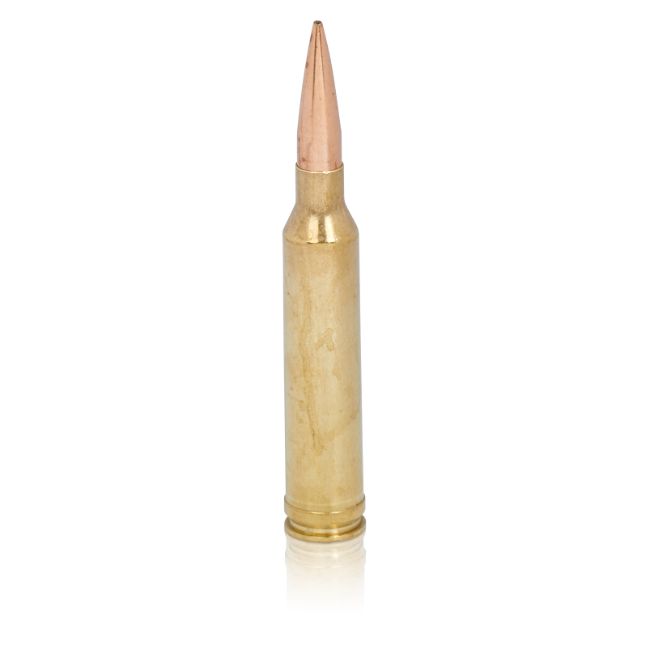
7mm Remington Magnum
A belted cartridge for big game hunters, the 7mm Remington was developed from the highly respected and versatile .375 H&H Magnum medium-bore rifle cartridge, which is one of the best all-purpose hunting cartridges in Africa.
The 7mm Remington has been chambered in sniper rifles for the U.S. Secret Service and is still widely used for hunting big plains game in the U.S. and Africa. It has a flat shooting nature and tolerable recoil.
Bullet mass: 150
Muzzle velocity: 3,110
Muzzle energy: 3,221
Recoil energy: 26
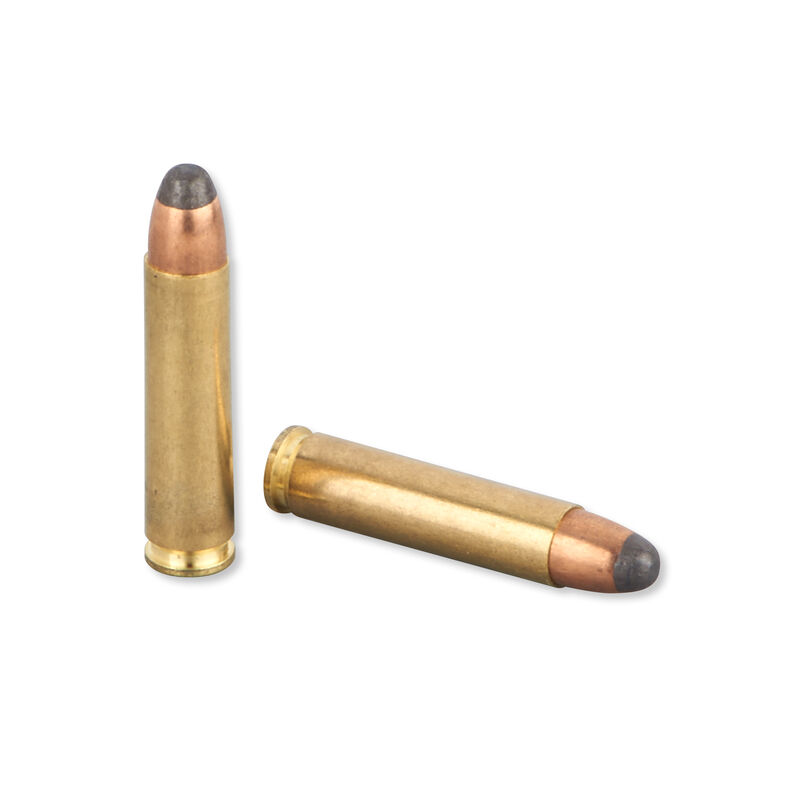
.30 Carbine
This is a rimless .30 caliber light rifle round that was introduced in the 1940’s for the widely used M1 carbine. It was meant to provide more power and accuracy than the standard .45 ACP handgun.
The M1 carbine is still a very popular collector’s firearm for sporting and historic reenactment. The cartridge is best suited for hunting small to medium game (varmints, foxes, coyotes). Some U.S. states don’t allow the .30 Carbine to be used on big game (deer, bear, boar).
Bullet mass: 110
Muzzle velocity: 1,990
Muzzle energy: 967
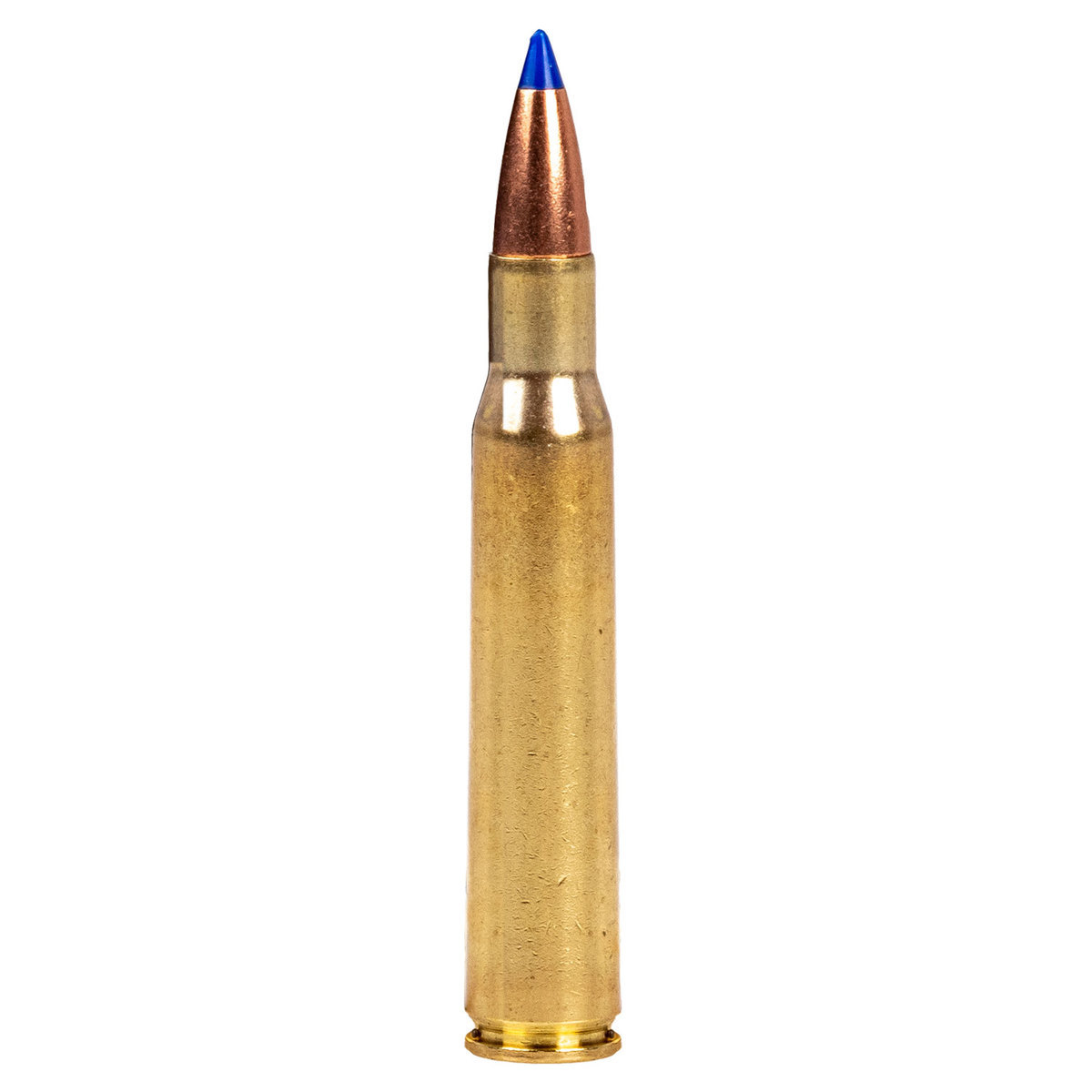
.30-06 Springfield / 7.62x63mm
This is the most popular .30 caliber all-purpose hunting cartridge in the U.S. It was adopted by U.S. Army in 1906 for the bolt-action M1903 Springfield rifle and was later used in the legendary M1 Garand rifle. It has seen extensive military service all over the world. Great thing to add to a gun cabinet coffee table.
The .30-06 was optimized for shot distances of 1,000 yards or more. This is a powerful and versatile cartridge that has remained popular because its recoil force remains at a tolerable level for most shooters despite its high muzzle energy (20 ft-lb with 165 grain bullet at 2900 fps). You can expect this round to stay supersonic through heavy wind and take down any type of game.
Bullet mass: 150
Muzzle velocity: 2,910
Muzzle energy: 2,820
Recoil energy: 16
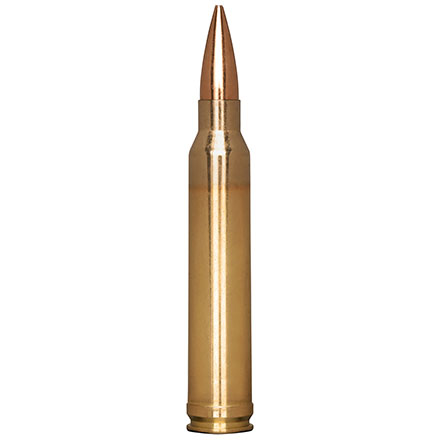
.300 Winchester Magnum
This belted bottlenecked magnum cartridge was introduced in 1963 for the Model 70. It is based on the .375 H&H Magnum and modified to accept a .30 caliber bullet.
It’s a highly versatile round that’s respected by hunters, target shooters, law enforcement, and military units for its powerful long-range performance and accuracy. It’s lighter 165 grain bullet option provides a flatter shot trajectory while the 200+ grain options pack a bigger punch. This cartridge is good enough to hunt any North American game animal and particularly effective against elk and moose.
Bullet mass: 180
Muzzle velocity: 3,146
Muzzle energy: 3,972
Recoil energy: 34
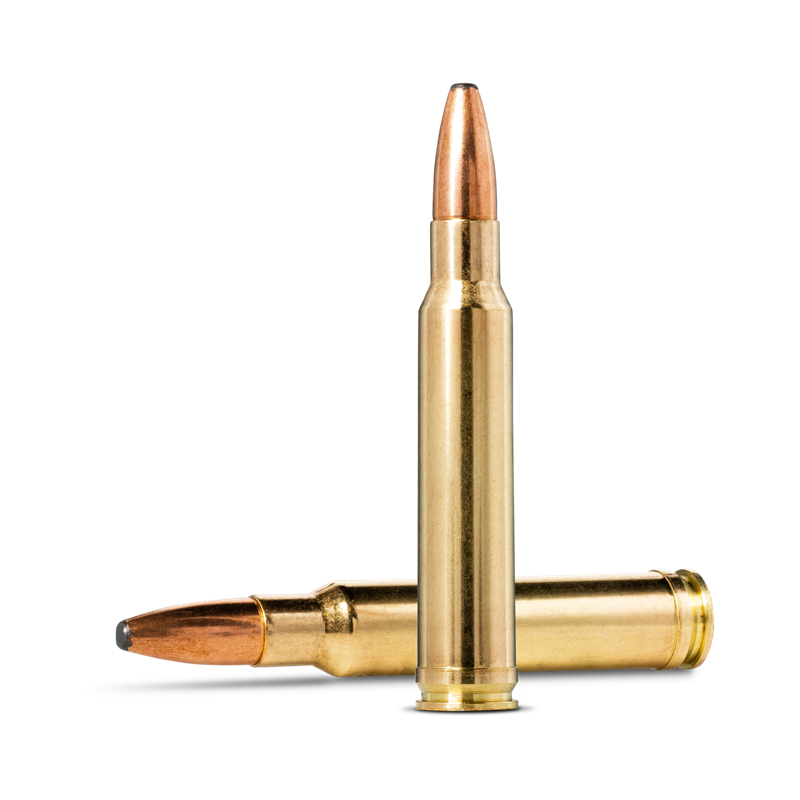
.338 Winchester Magnum
This belted rimless bottlenecked round is also based on the .375 H&H Magnum. The .338 Win Mag shoots hard and fast. It’s the most popular medium-bore cartridge in North America and the primary choice for professional brown bear guides in Alaska.
This impressive cartridge can launch heavy bullets with more energy at 200 yards than a .30-06 Springfield generates at muzzle. It’s a popular round with elk hunters and generally considered a good all-purpose plains game hunting cartridge.
Bullet mass: 225
Muzzle velocity: 2,800
Muzzle energy: 3,918
Recoil energy: 35.2

.270 Winchester
The .270 Win was introduced in 1925 for the bolt-action Model 54. It’s become highly popular as a versatile hunting cartridge with bullets designed for varmints or big game (deer, elk, moose). It’s also popular with metallic silhouette shooters.
It became popularized by famous authors and outdoorsmen who praised its superior ability to deal with big game at 300 to 500 yards (considered long range at the time). Now it can easily hit 1,000 yard targets with the right bullet. The .270 is chambered for bolt-actions, lever-actions, single-shots, pump-actions and autoloaders.
Bullet mass: 130
Muzzle velocity: 3,060
Muzzle energy: 2,595
Recoil energy: 17.3
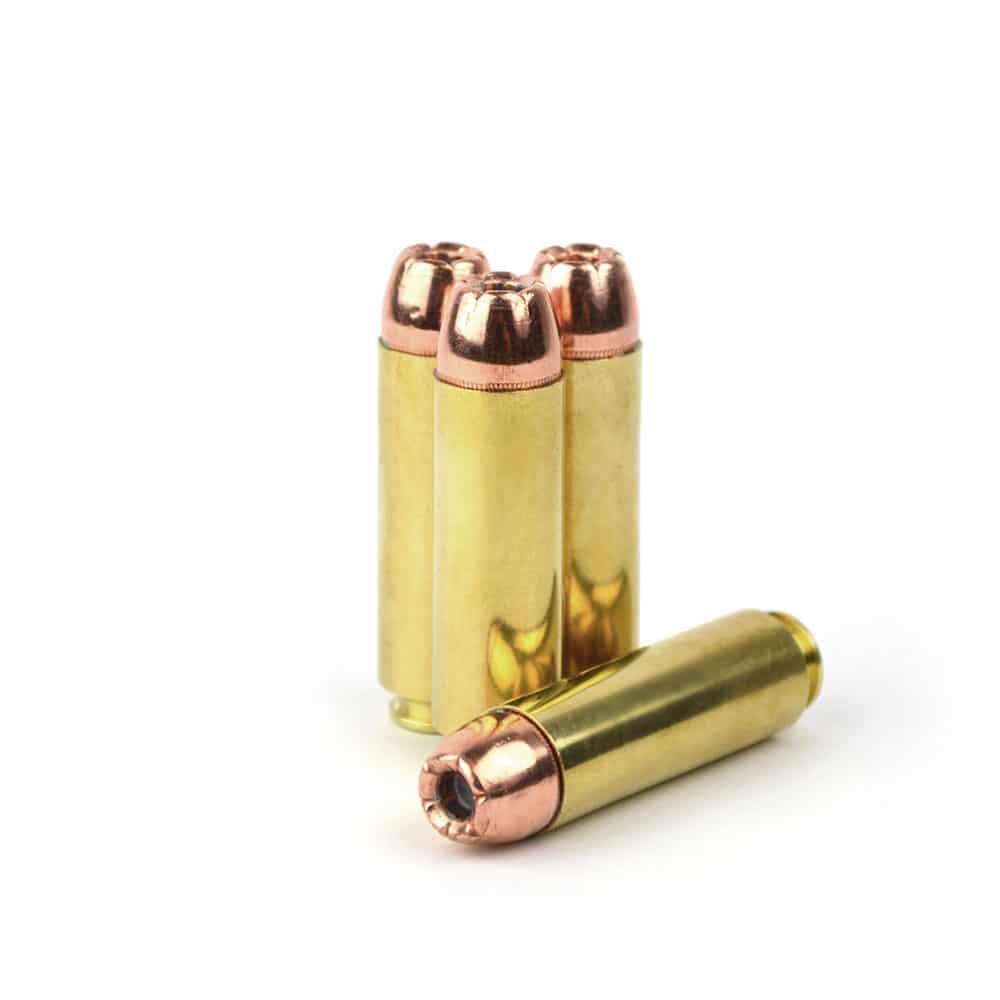
.50 Beowulf
The .50 Beowulf sounds mean. That’s because it’s a very heavy .500 caliber bullet that can stop vehicles in their tracks (e.g. vehicle checkpoints). It’s intended for use in the AR-15 rifle and designed to greatly improve stopping power over short to medium range as compared to the standard 5.56x45mm (.223 Remington) round.
The .50 Beowulf is a proprietary caliber manufactured by Alexander Arms and not a lot is known about it, except that it’s big and powerful. The exceptionally heavy weight and fat shape of its bullets are the source of its penetrative stopping power. The .50 Beowulf will deliver longer range and better accuracy than other rounds of similar mass, such as a 12 gauge. Overall it’s a great hunting or self-defense cartridge.
Bullet mass: 400
Muzzle velocity: 1,800
Muzzle energy: 2,878
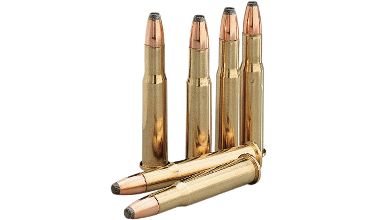
.30-30 Winchester
The Thirty-Thirty was the first small-bore sporting rifle cartridge developed for smokeless powder in the U.S. This centerfire cartridge was introduced as the .30 Winchester Smokeless in 1895 for the Model 1894. The ‘-30’ designation refers to the standard load of 30 grain bullets that were used at the time.
Today the .30-30 Win, also referred to as the .30 WCF, is considered to be an “entry-class” round for medium to big game hunting, particularly deer. It’s very effective at downing medium-sized game up to 200 yards. It will deliver a bullet hard and fast at that range. It’s light recoil and good ballistic performance make it one of the most popular deer-hunting cartridges in the world. It can take down bears too. However, it’s not very effective for long range hunting.
Bullet mass: 150
Muzzle velocity: 2,390
Muzzle energy: 1,903
Recoil energy: 11.2






